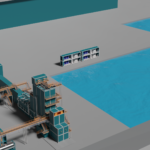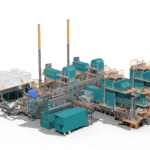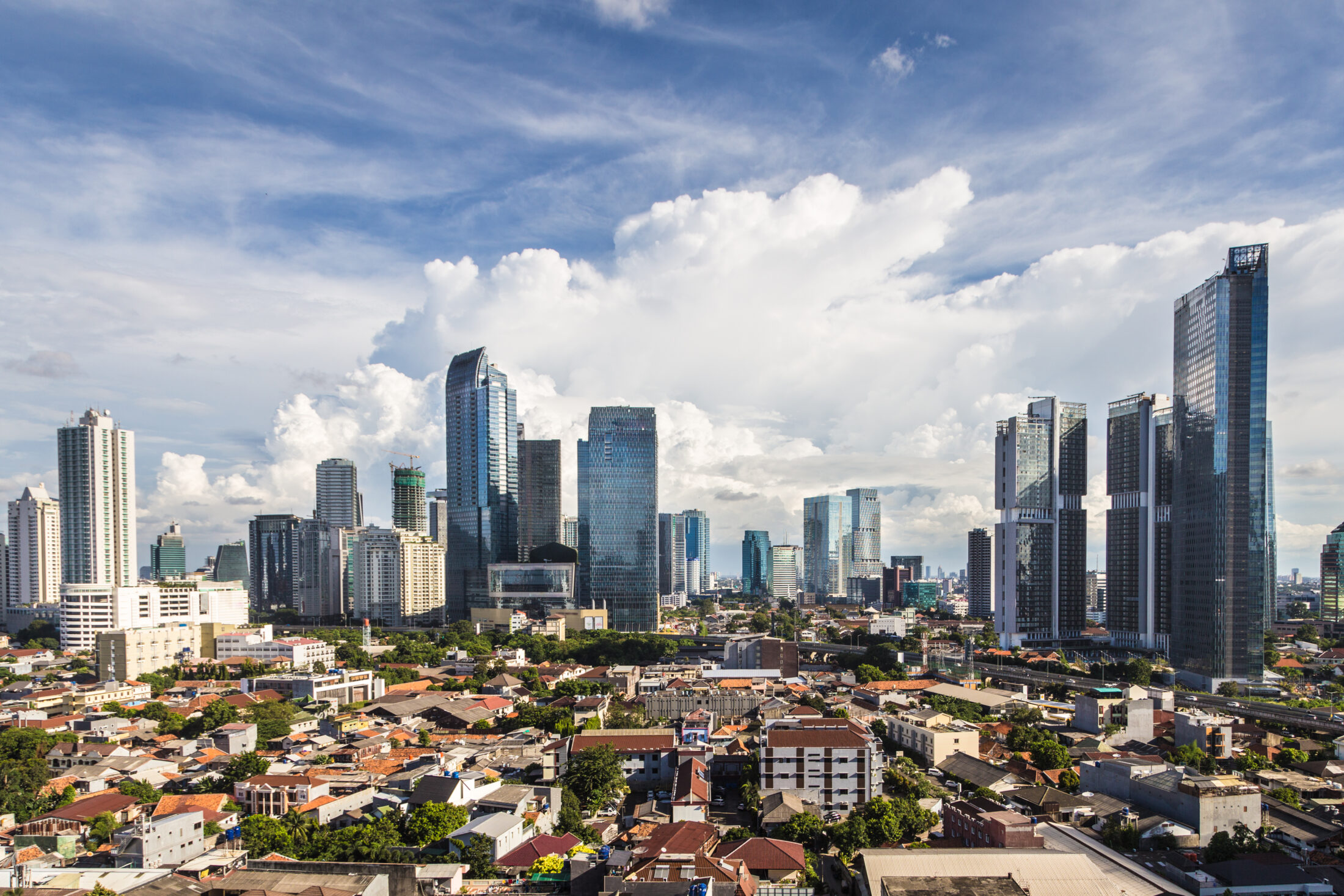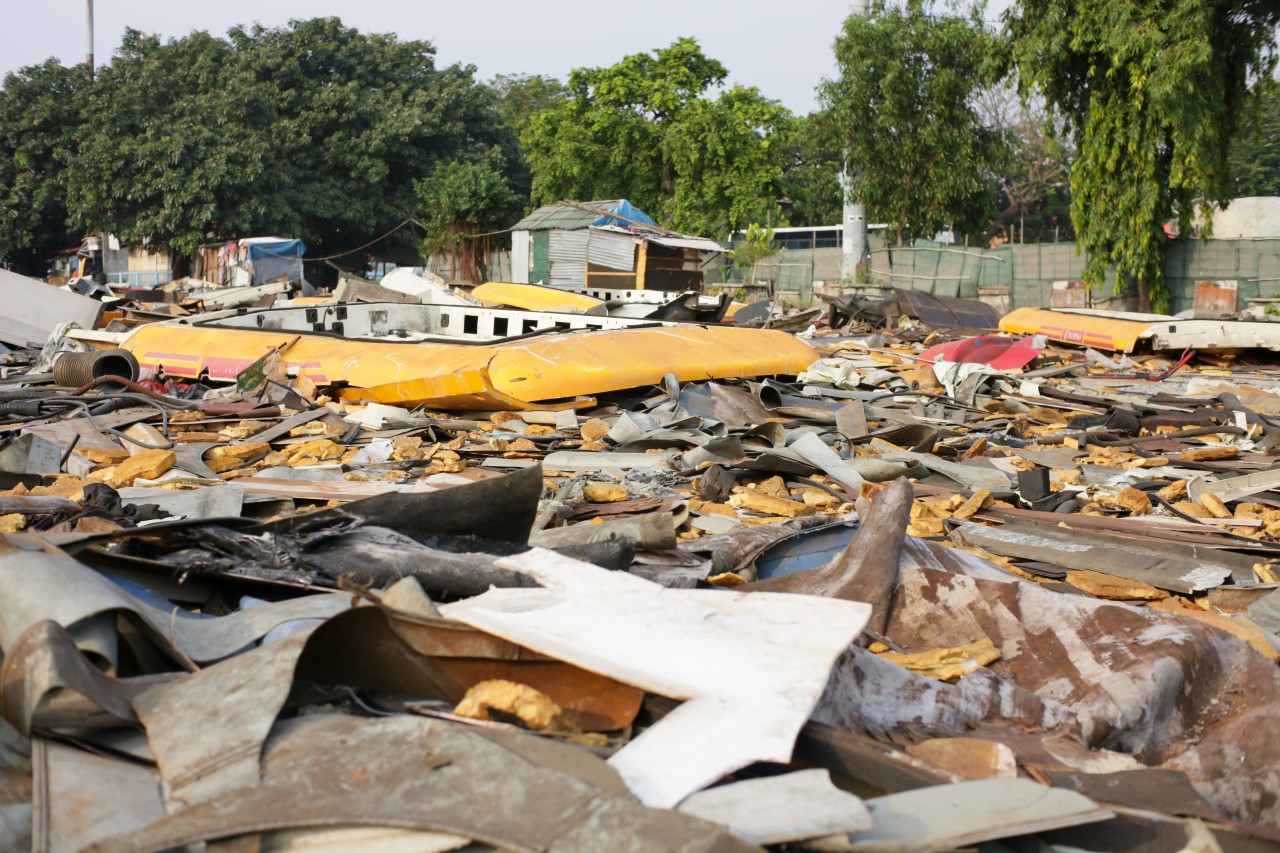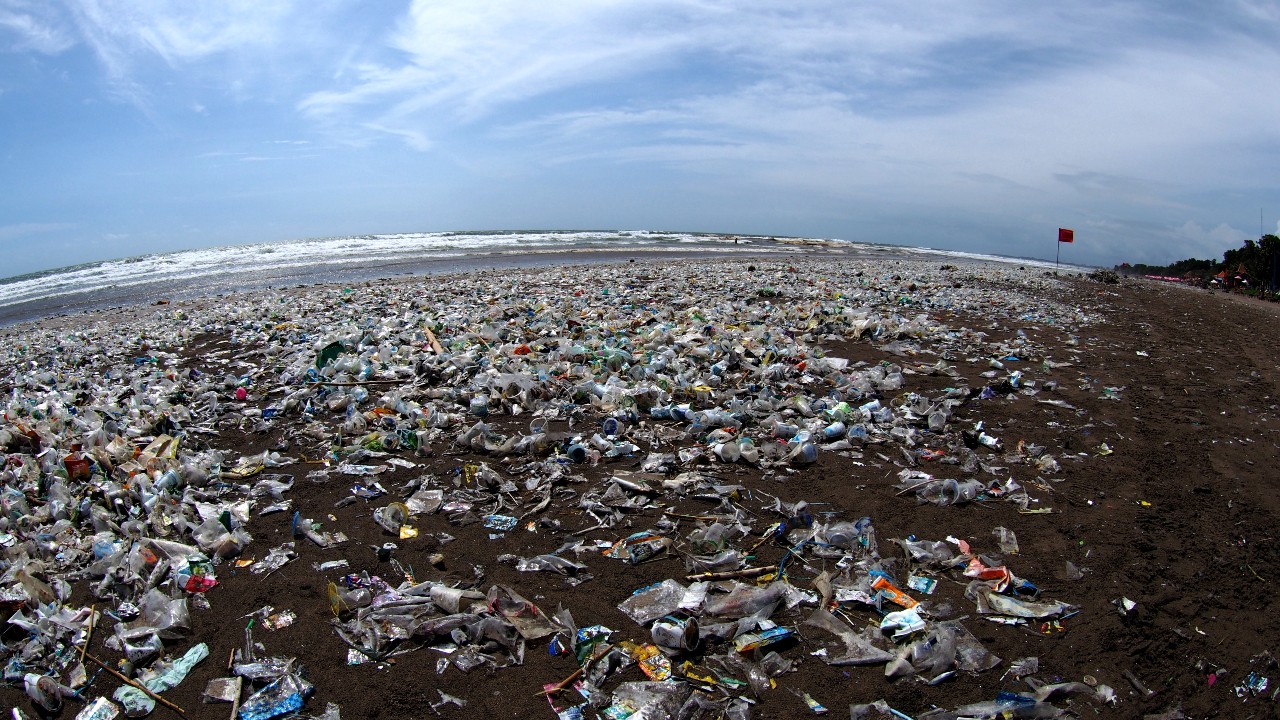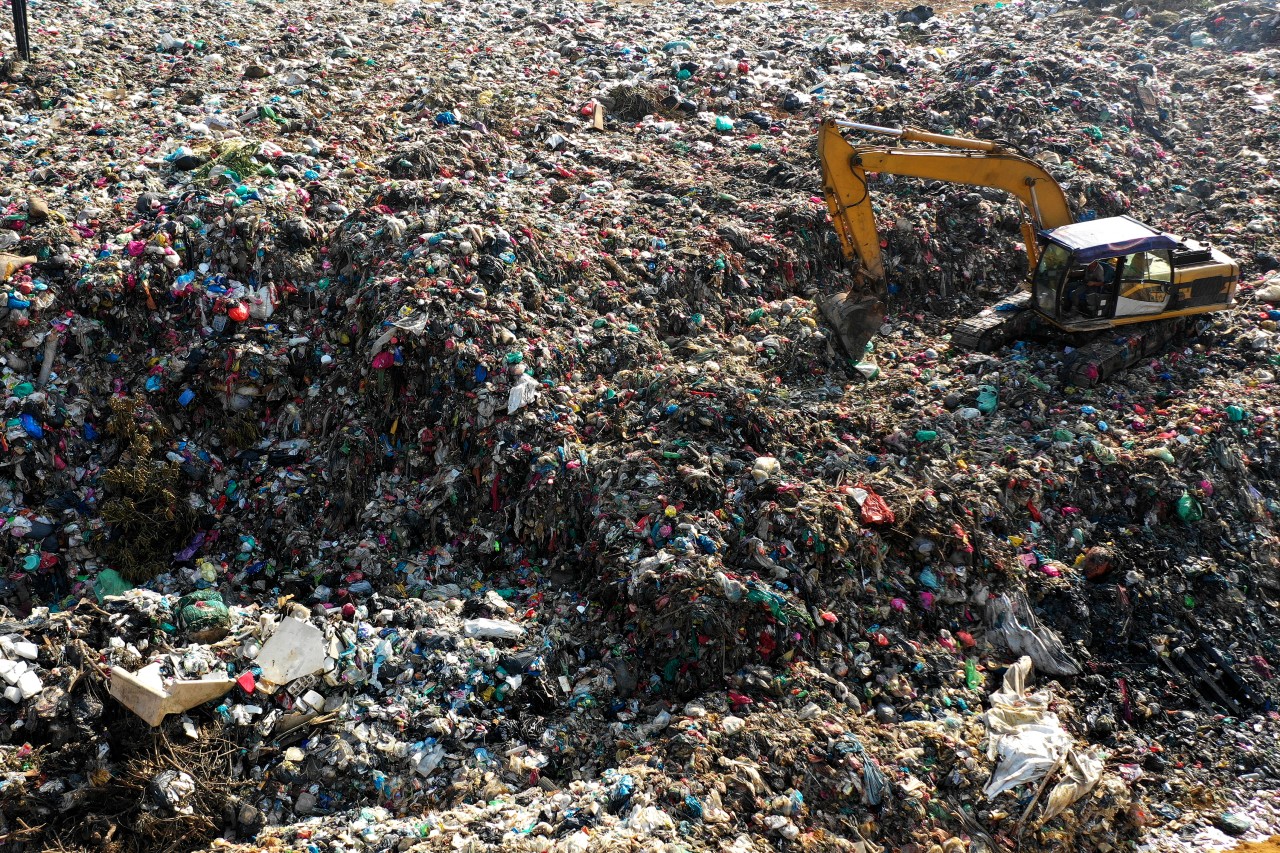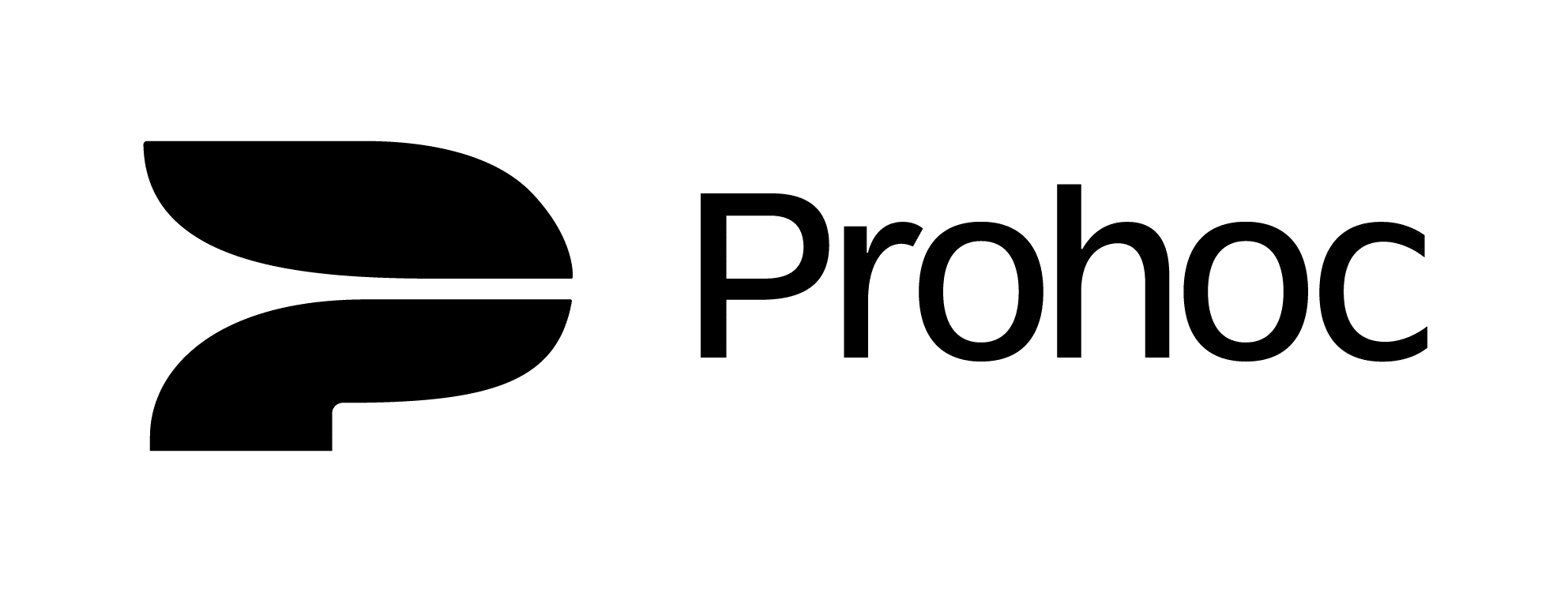Indonesia is the largest economy in Southeast Asia with a population of close to 250 million spread over a chain of 17,000 islands and almost 2,000,000 square kilometers. The vast equatorial archipelago extends over 5,000 kilometers east to west, between the Indian and Pacific Oceans. The largest islands are Sumatra, Java, Kalimantan (Indonesian Borneo), Sulawesi, and the Indonesian part of New Guinea. Islands are mountainous with dense rain forests, and some have active volcanoes. The capital city Jakarta has well over 10 million inhabitants.
Indonesia generates around 170,000 tons of waste daily. From all that waste, only 7,5% is recycled, 5% is burned, 8,5% is unmanaged, 10% is buried, and the remaining 69% is accumulated in landfills and dumpsites. This means that there is some 120,000 tons of waste piling up on our earth every day, enough to fill the famous Wembley football stadium in London once every week, and only 13,000 tons reprocessed into useful items.
Indonesia has a major plastic waste problem on its hands. At the moment, the country is second only to China when it comes to dumping plastic waste into the world’s oceans. An estimated 3.5 million metric tons of plastic waste is tossed annually into the ocean surrounding Indonesia. Up to 200 tons of mainly plastic waste is flushed onto the tourist-preferred beaches at Bali every day forcing the locals to take drastic measures in clening them.
The crisis of plastic waste isn’t just limited to the ocean, but it has also affected Indonesian rivers. Four of Indonesia’s rivers – Brantas, Solo, Serayu and Progo – rank among the 20 most polluted rivers in the world. The plastic waste choking rivers deprive local communities of their source of food and water. Clogged rivers also increase the likelihood of flooding which would be damaging to the surrounding communities.
Most plastic is non-recyclable and not biodegradable, meaning that it usually ends up in landfills – and Indonesia has plenty of them. The largest landfill in Indonesia is the Bantar Gebang landfill in Jakarta. Over 900 trucks operate there and deliver more than 5,000 tons of solid waste every day.
These landfills can be hazardous to the environment as plastic waste also releases harmful chemicals into the atmosphere. Initially, the leachate filtering through the landfills pollutes the soil and groundwater as chemicals seep into the ground and eventually make their way to rivers and lakes. Landfills also emit methane gas which is one of the worst greenhouse gases, 25 times more potent than CO2.
Indonesia has a roadmap towards the “2025 Clean-from-Waste Indonesia” target. The Indonesian government is continually establishing and polishing a plan in order to
• to reduce the waste generation by 30%
• to process and manage at least 70% of the waste to avoid it from being landfilled
WOIMA has the perfect solution to support the “2025 Clean-from-Waste Indonesia” goal. We have developed a decentralized waste management and power generation solution named “WOIMA Ecosystem” that helps emerging countries cope with the increasing waste challenges that they are facing. WOIMA Ecosystem recycles the waste into raw materials and energy in the most efficient manner reducing the waste quantity by over 95%. The small-to-medium size WOIMA Ecosystems are distributed close to where the waste is generated, thus offering significant waste logistics and power distribution savings in addition to solving the waste problem.
Read more: Woima decentralized W2E power generation – case study Nairobi Kenya
Contact WOIMA, if you see yourself as collaboration partner in saving the planet. Ask more about turning waste into wellbeing with WOIMA Circular Economy Solutions.

